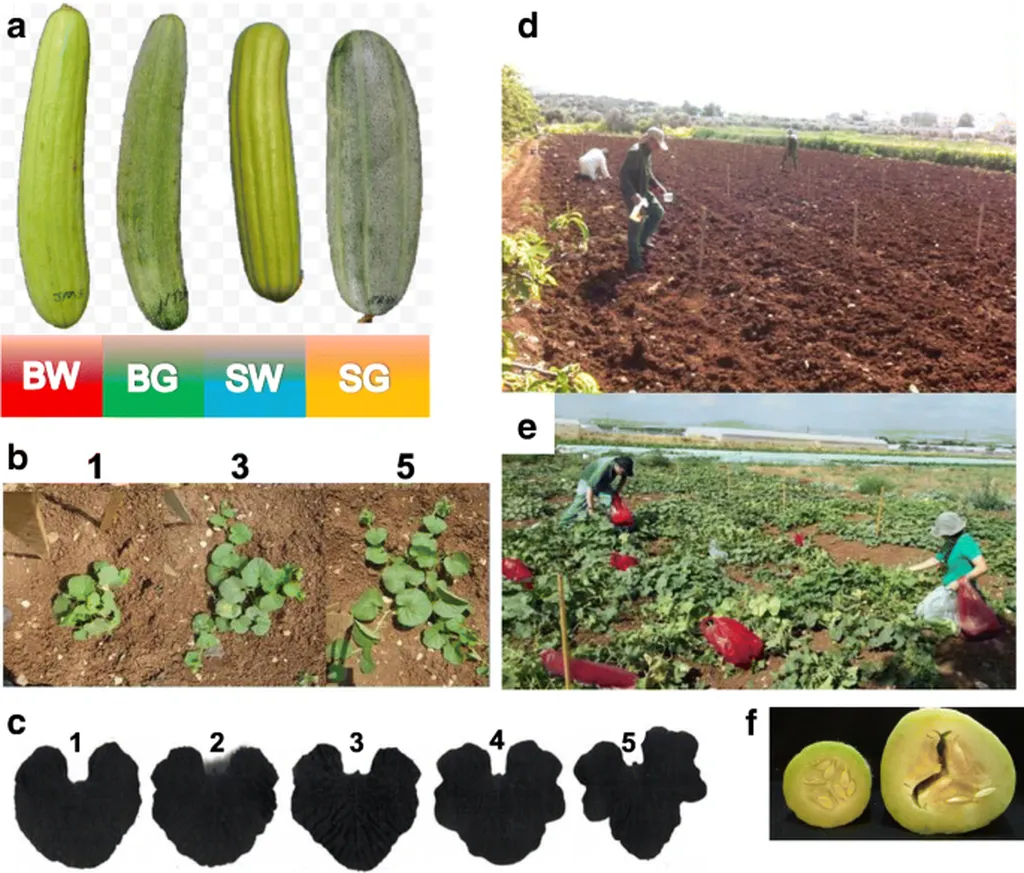In the sun-drenched fields of Cyprus and Greece, an ancient crop is making a comeback, not just as a culinary curiosity, but as a potential powerhouse for future agriculture. Snake melons, known in Greek as “Ophiomelo” or “serpent melon,” have been cultivated for millennia, yet their full potential has remained largely untapped. A recent study, led by Maria-Dimitra Tsolakidou from the Department of Agricultural Science, Biotechnology and Food Science at the Cyprus University of Technology, is shedding light on the remarkable genetic and phytochemical diversity of these heirloom varieties, offering promising avenues for crop improvement and stress resilience.
The study, published in the journal ‘Plants’, reveals that snake melon landraces harbor a significant degree of genetic and biochemical variation. This diversity could be a game-changer for breeders aiming to enhance nutritional quality and develop crops that can withstand the challenges of climate change. “The high degree of genetic variation we observed, particularly in genotypes like Atzouri and ARI001024, suggests that these landraces could be invaluable for breeding programs,” Tsolakidou explains. “They may hold the key to developing crops that are not only more nutritious but also more resilient to environmental stresses.”
Whole-genome analysis of the snake melon landraces uncovered a wealth of genetic variants, including single nucleotide polymorphisms (SNPs), insertions and deletions (InDels), structural variants (SVs), and copy number variations (CNVs). These variants are likely responsible for the diverse phenotypic and chemical traits observed among the landraces. For instance, some genotypes exhibited elevated levels of pigments, antioxidants, and minerals, indicating their potential to improve the nutritional profile of future crops.
The study also employed hierarchical clustering and principal component analysis (PCA) to establish relationships among the traits. These analyses reinforced the idea that the genetic resources present in these landraces could be harnessed to develop new varieties better suited to climate-resilient production schemes. “Our findings highlight the urgent need for the conservation and further genomic characterization of these landraces,” Tsolakidou emphasizes. “They represent a treasure trove of genetic diversity that could be crucial for the future of agriculture.”
The implications of this research extend beyond the agricultural sector. As the world grapples with the impacts of climate change, the development of stress-resilient crops is becoming increasingly important. The genetic diversity identified in snake melon landraces could contribute to the creation of crops that require less water, are more resistant to pests and diseases, and can thrive in harsher environments. This, in turn, could have significant benefits for the energy sector, as more resilient crops could reduce the need for energy-intensive agricultural practices and contribute to a more sustainable food system.
Moreover, the enhanced nutritional quality of these landraces could have positive impacts on public health. As consumers become more aware of the importance of a balanced diet, the demand for nutrient-rich foods is on the rise. The development of new crop varieties with elevated levels of pigments, antioxidants, and minerals could help meet this demand and contribute to improved health outcomes.
In conclusion, the study by Tsolakidou and her team underscores the importance of preserving and studying ancient crop varieties. The genetic and phytochemical diversity of snake melon landraces offers a wealth of opportunities for crop improvement and stress resilience. As we face the challenges of a changing climate and a growing population, the insights gained from this research could be instrumental in shaping the future of agriculture and the energy sector.

